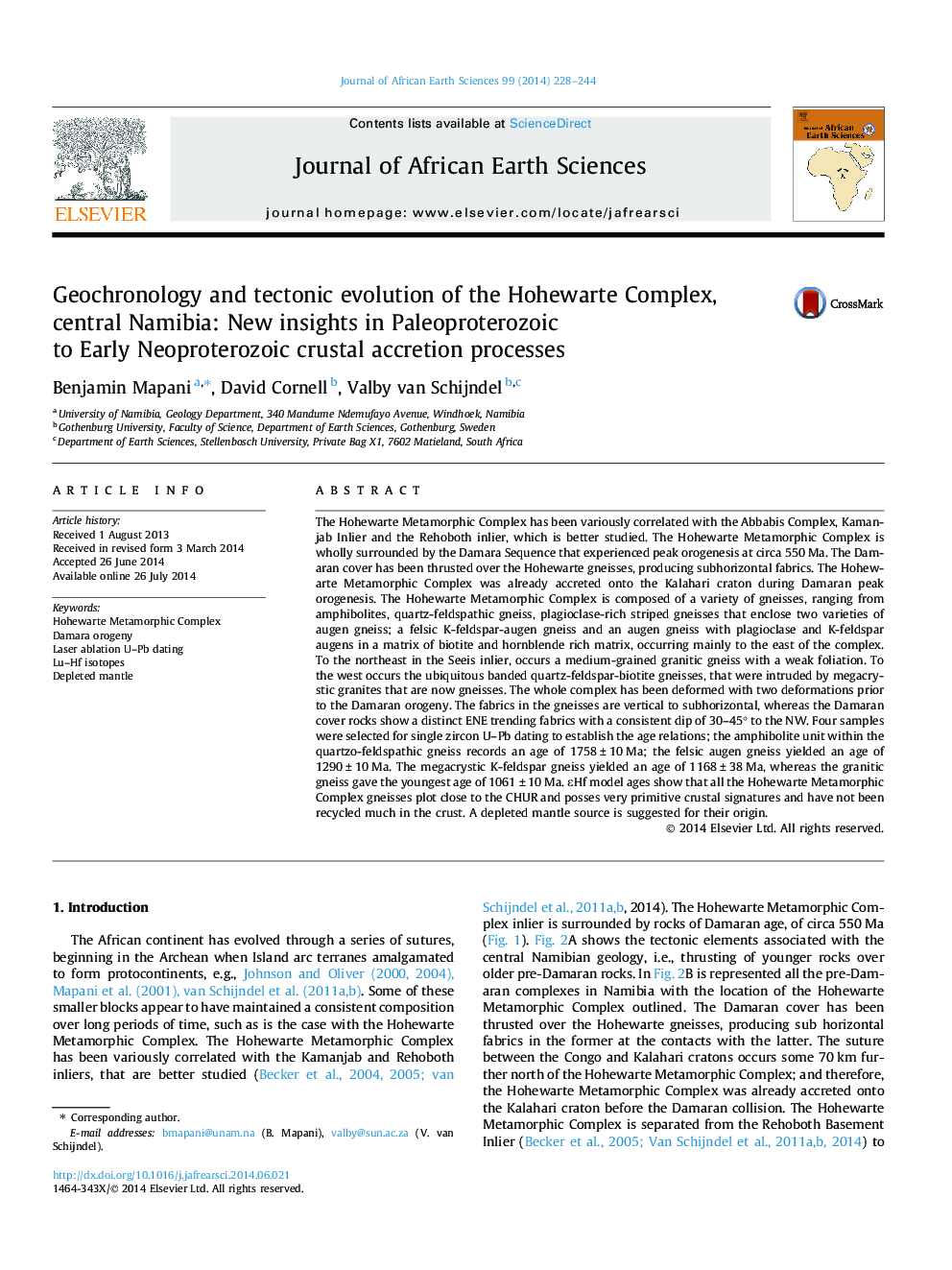| کد مقاله | کد نشریه | سال انتشار | مقاله انگلیسی | نسخه تمام متن |
|---|---|---|---|---|
| 6443838 | 1356467 | 2014 | 17 صفحه PDF | دانلود رایگان |
عنوان انگلیسی مقاله ISI
Geochronology and tectonic evolution of the Hohewarte Complex, central Namibia: New insights in Paleoproterozoic to Early Neoproterozoic crustal accretion processes
دانلود مقاله + سفارش ترجمه
دانلود مقاله ISI انگلیسی
رایگان برای ایرانیان
موضوعات مرتبط
مهندسی و علوم پایه
علوم زمین و سیارات
زمین شناسی
پیش نمایش صفحه اول مقاله

چکیده انگلیسی
The Hohewarte Metamorphic Complex has been variously correlated with the Abbabis Complex, Kamanjab Inlier and the Rehoboth inlier, which is better studied. The Hohewarte Metamorphic Complex is wholly surrounded by the Damara Sequence that experienced peak orogenesis at circa 550 Ma. The Damaran cover has been thrusted over the Hohewarte gneisses, producing subhorizontal fabrics. The Hohewarte Metamorphic Complex was already accreted onto the Kalahari craton during Damaran peak orogenesis. The Hohewarte Metamorphic Complex is composed of a variety of gneisses, ranging from amphibolites, quartz-feldspathic gneiss, plagioclase-rich striped gneisses that enclose two varieties of augen gneiss; a felsic K-feldspar-augen gneiss and an augen gneiss with plagioclase and K-feldspar augens in a matrix of biotite and hornblende rich matrix, occurring mainly to the east of the complex. To the northeast in the Seeis inlier, occurs a medium-grained granitic gneiss with a weak foliation. To the west occurs the ubiquitous banded quartz-feldspar-biotite gneisses, that were intruded by megacrystic granites that are now gneisses. The whole complex has been deformed with two deformations prior to the Damaran orogeny. The fabrics in the gneisses are vertical to subhorizontal, whereas the Damaran cover rocks show a distinct ENE trending fabrics with a consistent dip of 30-45° to the NW. Four samples were selected for single zircon U-Pb dating to establish the age relations; the amphibolite unit within the quartzo-feldspathic gneiss records an age of 1758 ± 10 Ma; the felsic augen gneiss yielded an age of 1290 ± 10 Ma. The megacrystic K-feldspar gneiss yielded an age of 1168 ± 38 Ma, whereas the granitic gneiss gave the youngest age of 1061 ± 10 Ma. εHf model ages show that all the Hohewarte Metamorphic Complex gneisses plot close to the CHUR and posses very primitive crustal signatures and have not been recycled much in the crust. A depleted mantle source is suggested for their origin.
ناشر
Database: Elsevier - ScienceDirect (ساینس دایرکت)
Journal: Journal of African Earth Sciences - Volume 99, Part 2, November 2014, Pages 228-244
Journal: Journal of African Earth Sciences - Volume 99, Part 2, November 2014, Pages 228-244
نویسندگان
Benjamin Mapani, David Cornell, Valby van Schijndel,